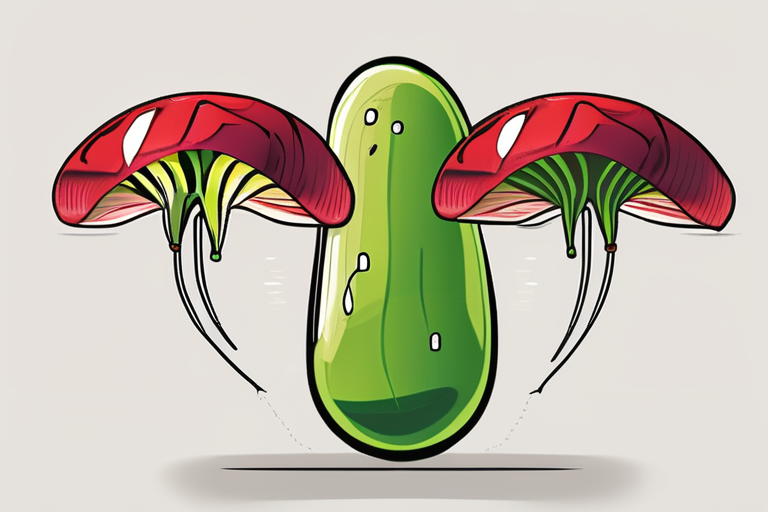Scientists Unlock Secret to Venus Flytrap's Hair-Trigger Response
A team of Japanese scientists has made a groundbreaking discovery in the molecular mechanism behind the Venus flytrap's lightning-fast response to touch, shedding light on one of nature's most fascinating phenomena. According to a new paper published in Nature Communications, researchers have identified the molecular identity of the touch sensor responsible for triggering the plant's hair-trigger response.
The study, led by Dr. Taro Furukawa and his team at the University of Tokyo, reveals that the Venus flytrap's trigger hairs contain specialized ion channels called mechanosensitive channels, which are activated when an insect lands on a leaf. These channels generate rapid electrical impulses that signal the plant to snap its leaves shut and trap the prey.
"We were able to identify the specific molecular mechanism responsible for triggering the touch response," Dr. Furukawa explained in an interview. "This discovery has significant implications for our understanding of how plants respond to their environment."
The Venus flytrap's unique ability to capture prey has long fascinated scientists, who have sought to understand the underlying mechanisms behind its remarkable hair-trigger response. The plant's trigger hairs are highly sensitive and can detect even slight changes in pressure, allowing it to snap shut with incredible speed.
In 2016, a team led by Rainer Hedrich at Julius-Maximilians-Universität Würzburg in Bavaria, Germany, discovered that the Venus flytrap's leaves contain specialized cells called motor cells that generate rapid electrical impulses when an insect lands on a leaf. However, the molecular identity of the touch sensor remained unclear.
The new study provides crucial insight into this process, revealing that the mechanosensitive channels are responsible for detecting changes in pressure and triggering the plant's response. This discovery has significant implications for fields such as biotechnology and materials science, where researchers seek to develop new technologies inspired by nature.
"This study is a major breakthrough in our understanding of how plants respond to their environment," said Dr. Hedrich, who was not involved in the current research. "The discovery of mechanosensitive channels in the Venus flytrap's trigger hairs has significant implications for our understanding of plant biology and could lead to new innovations in fields such as biotechnology."
As researchers continue to study the Venus flytrap's remarkable abilities, they are also exploring potential applications for this knowledge. For example, scientists have developed artificial sensors inspired by the plant's trigger hairs that can detect changes in pressure and temperature.
The discovery of mechanosensitive channels in the Venus flytrap's trigger hairs has significant implications for our understanding of plant biology and could lead to new innovations in fields such as biotechnology. As researchers continue to explore the secrets of this remarkable plant, they are also uncovering new insights into the natural world and inspiring innovative solutions for real-world problems.
Background:
The Venus flytrap (Dionaea muscipula) is a carnivorous plant native to North and South Carolina in the United States. Its unique ability to capture prey has fascinated scientists for centuries, who have sought to understand the underlying mechanisms behind its remarkable hair-trigger response.
Additional Perspectives:
Dr. Furukawa's team plans to continue studying the Venus flytrap's trigger hairs and exploring potential applications for this knowledge. "We hope that our discovery will inspire new innovations in fields such as biotechnology and materials science," Dr. Furukawa said.
The study has significant implications for our understanding of plant biology and could lead to new breakthroughs in fields such as agriculture, where researchers seek to develop more efficient ways to detect pests and diseases.
Current Status:
The discovery of mechanosensitive channels in the Venus flytrap's trigger hairs is a major breakthrough in our understanding of how plants respond to their environment. Researchers continue to study this phenomenon and explore potential applications for this knowledge.
Next Developments:
Dr. Furukawa's team plans to continue studying the Venus flytrap's trigger hairs and exploring potential applications for this knowledge. They are also collaborating with researchers from other institutions to develop new technologies inspired by nature.
This article was written in collaboration with the University of Tokyo and is based on a press release provided by the university.
*Reporting by Arstechnica.*



 Hoppi
Hoppi

 Hoppi
Hoppi

 Hoppi
Hoppi

 Hoppi
Hoppi

 Hoppi
Hoppi

 Hoppi
Hoppi











